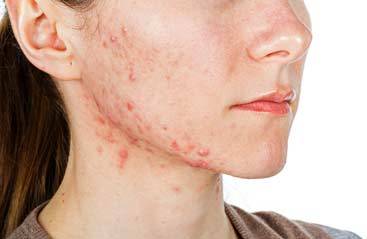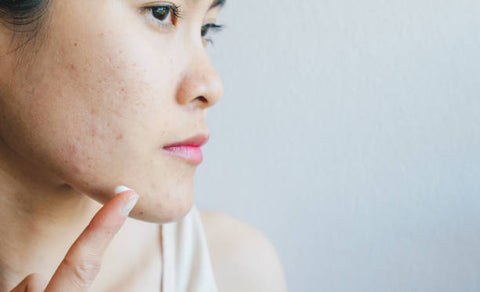Clear as Day – Bringing to Light the Truths About Acne Scars

As the most prevalent skin condition in the United States, acne affects about 50 million people annually. 1 out of 5 of these also suffers from acne scarring. Some would just sullenly accept it as an unfortunate hereditary trait they have no control over. Others exert all means to get rid of the scars including undergoing cosmetic procedures, and some resort to old wives’ tales like getting a tan to make the scars disappear.
If you’re part of the one-fifth of the population who experience scarring from acne, it’s best to know more about it so you can deal with it more effectively. To clear your mind of fears and worries about your acne scars, here’s a short guide on what they are, your treatment options, and what you can do to prevent them.
What are Acne Scars?
Like other forms of scarring, acne scars form when the body repairs damaged tissues. In this case, the tissue damage is caused by acne breakouts that penetrate deeply into the skin. Sebum, bacteria, and dead skin cells cause inflammation in skin pores. As the pore swells, it breaks down the walls of the surrounding tissues. This triggers the body to release collagen to mend the damage.
Generally, smaller blemishes create shallow scars that heal quickly while larger ones cause deeper scars that do not disappear without treatment. However, the severity of scars does not depend solely on the size of the acne breakout. It is also impacted by other factors such as skin condition and skin type. Moreover, each person has a unique response to wounds and healing. Even with similar acne breakouts, some people would have scars while others won’t.
Types of Acne Scars
Acne scars come in various forms but can be classified into three main types – atrophic, hypertrophic, and keloidal. One is caused by tissue loss that creates an indentation in the skin while the other two are due to the overproduction of collagen that results in raised scars.
Your genes determine which types of scars you’re most likely to get, depending on how your body responds to acne breakouts. They will influence the amount of collagen your body produces and thus impact the type of scarring.
This does not mean though that you’d only have one type of acne scar. You’d likely have a combination of these different types.
Atrophic scars
Indentations or pits in the skin are created when tissue is damaged but the body does not produce enough collagen while it is healing. These depressed scars are further classified into three types:
- Rolling scars are wide indents with round sloping edges that give the skin an uneven appearance. Shallow ones fade over time but others may need some treatment to accelerate cell growth.
- Boxcar scars are wide indents with sharp edges. Shallow ones respond well to skin resurfacing procedures but deep ones require more intensive treatment.
- Icepick scars are the most difficult to treat. These V-shaped scars look like small round holes on the surface but go much deeper into the skin than the other two types.
Hypertrophic scars
During the wound healing process, the skin forms new collagen fibers. When there is too much collagen produced, fibrous tissues overgrow. This results in scars that are raised a few millimeters from the skin. They are usually pink or red and can be itchy or painful at times. Some hypertrophic scars disappear after several months. Those that do not can be minimized or removed through dermatological treatments.
Keloidal Scars
Like hypertrophic scars, keloidal acne scars are caused by too much collagen produced during the healing process. Their appearances are also similar. What differentiates the two is the extent of the scar formation. Keloids grow beyond the boundaries of the acne lesion and are raised four millimeters or higher from the skin. They may require minor cosmetic surgery or other cosmetic procedures.
How Acne Scars Affect the Quality of Life
The effect of acne scars goes deeper than physical appearances. While they are not physically debilitating, they have significant emotional, psychological, and social impacts. They can lead to low self-esteem, poor self-identity, anxiety, depression, and other such behaviors that affect one’s quality of life.
People who suffer from acne scarring feel self-conscious and are anxious about what others may say about them. To others, this may sound superficial, but a multi-national survey substantiates how people with acne scars are perceived negatively by society. The survey shows that people with scars were considered less attractive and less likely to have a promising future. They were also perceived as shy and insecure.
Because of this social perception, they tend to avoid social activities and minimize interactions with other people. This often affects their productivity in school or at work. A report shows that acne results in approximately $398 million in lost productivity. It would be safe to surmise that a good fraction of this number is due to acne scarring.
How to Treat Acne Scars
Acne scars can be treated using over-the-counter skin care products, dermatological treatments, or cosmetic procedures, depending on their severity. Your doctor may conduct a visual examination to determine the type of scars you have and the most appropriate treatment for them.
OTC medications
Shallow acne scars can be treated with creams, gels, or ointments that contain alpha-hydroxy acids, lactic acids, retinoids, or salicylic acid. There is a wide variety of anti-scarring products, but it is advisable to consult a dermatologist first before trying a new product.
Dermatological treatments
If topical OTC medications cannot improve the appearance of scars, your dermatologist may suggest other treatments such as dermabrasion, chemical peels, laser surfacing, micro-needling, or dermal fillers. The treatment will depend on the type of scar, its severity, and your specific skin condition.
Cosmetic surgery
Minor surgical procedures such as subcision or excision may be recommended for cases of severe scarring. These are outpatient procedures done by licensed dermatologists or cosmetic surgeons in clinics or health facilities.
How to Prevent Acne Scars from Forming
Preventing acne breakouts is still the best way to avoid acne scars. Have a good skin care routine and use products that are proven safe and effective. Maintain a balanced diet, exercise regularly, and live a healthy lifestyle.
On days when breakouts persist, minimize scarring by refraining from scratching or picking the zits. Wear sunblock and avoid staying out in the sun for long periods. Avoid smoking as well because it increases your risk of scarring. Most importantly, get acne treatment as soon as you can.
Don’t Be Scarred for Life
Acne scars are not a death sentence. While it may take time to clear up these scars, they are treatable and preventable. Although several cosmetic procedures can make them disappear, the best solution is still prevention. Do what you can to minimize acne breakouts. Practice good skin care and have a regular skincare regimen. Use only the most suitable products for your skin type manufactured by trusted brands. Consult your dermatologist and get treatment for your acne as soon as possible. As you prevent acne from forming, you also reduce your risks for scarring.


